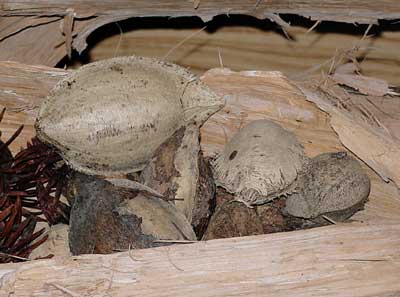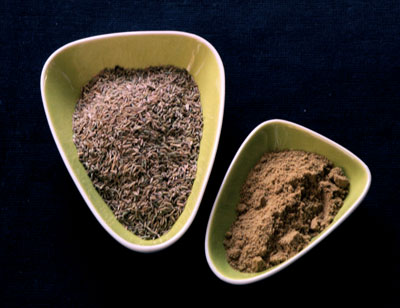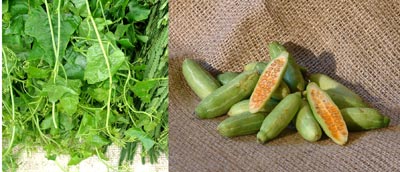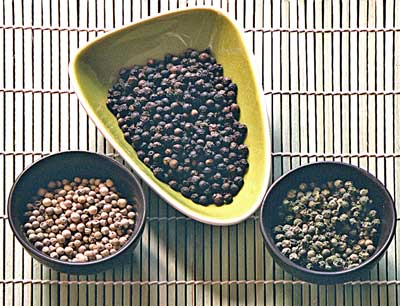
Tropical almond. The fruit looks similar to the almond and is usually pale green, though it may be reddish-purple. There is a fibrous seed containing a pointed kernel, or nut. It can be eaten fresh and raw, or cooked. It is sometimes difficult to remove the fibrous seed without damaging the nut. There is a thin covering of skin on the nut, and it is worth removing it as it can be very astringent. It is much prized in the Moghul cooking of northern India, they are eaten fresh or used in badam barfi, fudge-like sweets, or used to thicken sauces in dishes such as korma. They are grown in Kashmir and Afghanistan as they do not grow well in tropical regions. Elsewhere, cashew and other nuts are substituted.

Cumin seeds. The white seeds are commonly used. It is a musty smelling spice, the flavour of which is improved by roasting or frying.

Cumin seeds. The white seeds are commonly used. It is a musty smelling spice, the flavour of which is improved by roasting or frying.

Cumin seeds. The white seeds are commonly used. It is a musty smelling spice, the flavour of which is improved by roasting or frying.

Ivy gourd. A small crunchy gourd reminiscent of a gherkin, green ripening to red, popular in the cuisines of India, Thailand, Indonesia and other South East Asian countries. The shoots and leaves can also be eaten.

Black peppercorns, the fruit of a perennial vine with large leaves and white flowers. Green peppercorns are the unripe fruits picked early and pickled. Black peppercorns are picked just before they ripen and white peppercorns are the ripe, black peppercorns with the black skin flaked off. They are best kept whole and ground when required. Historically, pepper was one of the world's most important spices. Columbus sailed West, not East, in search of pepper in the East Indies. Instead he found the Americas and allspice.